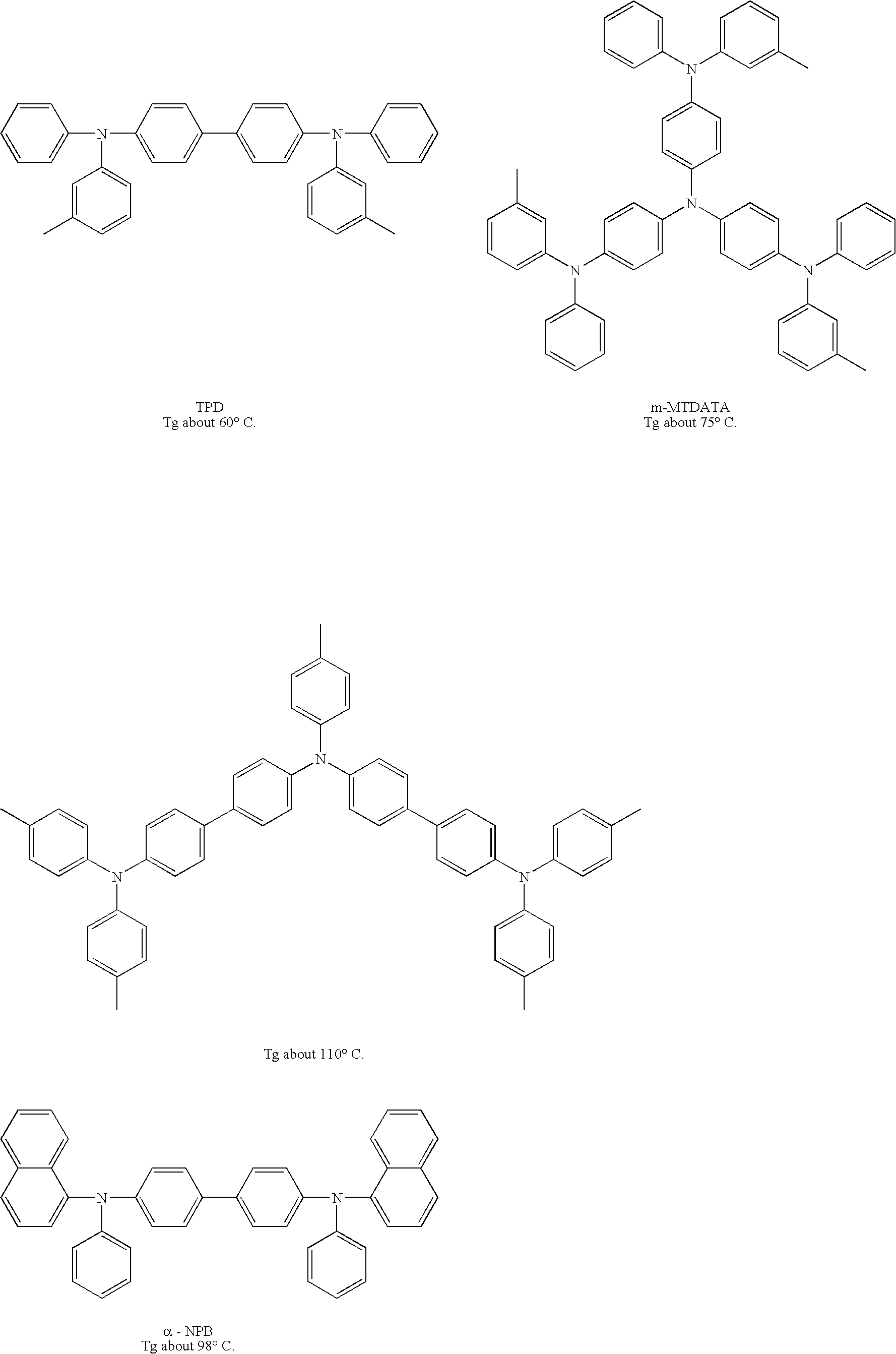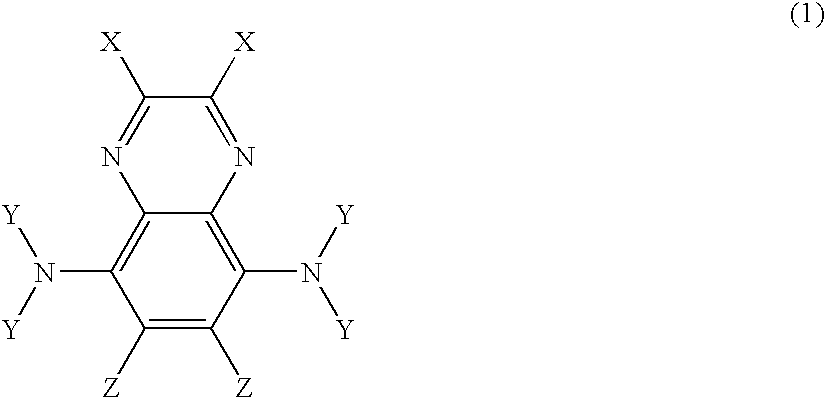Amine based compound and organic electroluminescence device using the same
a technology of organic electroluminescence and compound, which is applied in the direction of discharge tube luminescnet screen, discharge tube/lamp details, organic chemistry, etc., can solve the problems of elution, insufficient light emission lifetime of each film, and non-uniform film, etc., and achieves low ionization potential, high injection efficiency, and large band gap energy
- Summary
- Abstract
- Description
- Claims
- Application Information
AI Technical Summary
Benefits of technology
Problems solved by technology
Method used
Image
Examples
synthesis example 1 (
Synthesis of Compound 1)
[0176] A synthetic route for Compound 1 is shown below.
(1) Synthesis of Intermediate 1-1
[0177] 18.1 g (133 mmol) of benzothiadiazole were loaded into a 200-ml three-necked flask, and were dissolved in 42.9 ml of a 47% aqueous solution of HBr. 20 ml of bromine were dropped to the solution at room temperature over 20 minutes. Further, 13.3 ml of a 47% aqueous solution of HBr were added to the mixture, and the whole was refluxed for 24 hours. The temperature of the resultant was cooled to room temperature, and the resultant solid was dissolved in 700 ml of dichloromethane. After that, 400 ml of a saturated aqueous solution of sodium thiosulfate were added to the solution, and the whole was sufficiently extracted by using a separating funnel. Further, a dichloromethane layer was washed with 150 ml of distilled water 3 times, and was then dried with anhydrous sodium sulfate. Dichloromethane was concentrated to 200 ml, and the resultant was left at 4° C. for 24...
synthesis example 2 (
Synthesis of Compound 2)
[0187] A synthetic route for Compound 2 is shown below.
[0188] (1) Synthesis of Intermediate 2-1
[0189] 8.5 g of Intermediate 2-1 were obtained in a yield of 80% in the same manner as in the above item (3) of Synthesis Example 1 except that 4.4 g (FW 182, 24.3 mmol) of acenaphthenequinone were used instead of 5.1 g of 9,10-phenanthrenequinone.
[0190] (2) Synthesis of Compound 2
[0191] 3.0 g of an orange solid as Compound 2 were obtained in the same manner as in the above item (4) of Synthesis Example 1 except that Intermediate 2-1 (FW 438, 5.7 mmol, 2.3 g) was used instead of 2.5 g of Intermediate 1-3. The yield was 90%.
[0192] The results of measurement of the field desorption mass spectrum (FD-MS), ionization potential, and Tg (glass transition temperature) measured by differential scanning calorimetry (DSC) of the resultant product are shown below. [0193] FD-MS: Calcd. for C42H28N4=588Found=588 [0194] Ionization potential: 5.19 eV [0195] Tg: A peak temper...
example 1
[0208] A glass substrate with an ITO transparent electrode measuring 25 mm wide by 75 mm long by 1.1 mm thick (manufactured by GEOMATEC Co., Ltd.) was subjected to ultrasonic cleaning in isopropyl alcohol for 5 minutes. After that, the substrate was subjected to UV ozone cleaning for 30 minutes. The glass substrate with the transparent electrode line after the washing was mounted on a substrate holder of a vacuum deposition device. First, Compound 1 was formed into a film having a thickness of 60 nm on the surface on the side where the transparent electrode line was formed to cover the transparent electrode. The Compound 1 functions as a hole injecting layer. Next, an N,N,N′,N′-terakis(4-biphenyl)-4,4′-benzidine film (BPTPD film) having a thickness of 20 nm was formed on the Compound 1. The BPTPD film functions as a hole transporting layer. Further, Compound A having a thickness of 40 nm to be described below and doping Compound B at a deposition rate of 40:2 were simultaneously dep...
PUM
| Property | Measurement | Unit |
|---|---|---|
| ionization potential | aaaaa | aaaaa |
| temperature | aaaaa | aaaaa |
| boiling point | aaaaa | aaaaa |
Abstract
Description
Claims
Application Information
 Login to View More
Login to View More - R&D
- Intellectual Property
- Life Sciences
- Materials
- Tech Scout
- Unparalleled Data Quality
- Higher Quality Content
- 60% Fewer Hallucinations
Browse by: Latest US Patents, China's latest patents, Technical Efficacy Thesaurus, Application Domain, Technology Topic, Popular Technical Reports.
© 2025 PatSnap. All rights reserved.Legal|Privacy policy|Modern Slavery Act Transparency Statement|Sitemap|About US| Contact US: help@patsnap.com



